Steam Zone Scientists
Come and say hello to our distinguished scientists at the STEAM zone!
Dr. Tyler Richey-Yowell
Dr. Tyler Richey-Yowell is a Percival Lowell Postdoctoral Fellow at Lowell Observatory Her primary research interests are in characterizing the early evolution of stars smaller than our Sun, interpreting what this means in our understanding of how these types of stars work, and determining how their evolution impacts the planets orbiting them. Dr. Richey-Yowell uses both ground- and space-based instruments primarily in the UV, optical, and infrared to study these types of relationships between stars and exoplanets.
Dr. Teddy Kareta
Dr. Teddy Kareta is a planetary astronomer and postdoctoral researcher at Lowell Observatory. He received his bachelor’s degrees from the University of Massachusetts Amherst and his doctorate from the University of Arizona. His primary interests lie in the small bodies of the Solar System — the comets, asteroids, and trans-Neptunian objects — and how they have evolved since their formation four and a half billion years ago. He has also had key roles on two NASA spacecraft missions, OSIRIS-REx and DART, and led efforts to characterize the first interstellar comet, 2I/Borisov starting just days after its discovery.
Dr. Kyler Kuehn
Dr. Kyler Kuehn is the Director of Technology at Lowell Observatory, where he leads the team responsible for the construction, maintenance, and operation of astronomical facilities and instruments. His research focuses on the application of photonic technologies to novel astronomical instrumentation. Prior to his tenure at Lowell, he was an Instrument Scientist and Project Manager at the Australian Astronomical Observatory. He also served as a Postdoctoral Researcher at Argonne National Laboratory and The Ohio State University. He received his PhD in Particle Astrophysics from the University of California, Irvine.
Dr. Nick Moskovitz
Dr. Nick Moskovitz is a planetary astronomer at Lowell Observatory. He has degrees from the University of California at Santa Barbara and the University of Hawaii. His research focuses on asteroids, comets, and meteors. This work aims to improve our understanding of how the Solar System formed and of the impact hazard that these bodies may pose to Earth. His work has supported a number of spacecraft missions including NASA’s DART mission, the Japanese Hayabusa2 mission, and efforts related to asteroid mining.
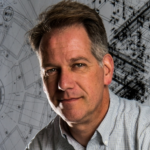 Dr. Gerard van Belle
Dr. Gerard van Belle
Dr. van Belle is an Astronomer at the Lowell Observatory, with degrees in physics and astronomy from Whitman College, The Johns Hopkins University, and the University of Wyoming. He is an internationally recognized expert in the design, construction, commissioning, and use of optical telescope arrays, for carrying out astronomical observations at the highest levels of spatial resolution. His telescope projects have been pioneering in the fields of stellar surface imaging and characterization of exoplanet host stars. At home he is a not-quite-incompetent homebrewer, and is restoring a vintage pinball machine.
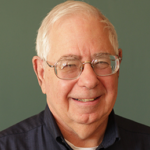 Dr. Larry Wasserman
Dr. Larry Wasserman
Dr. Larry Wasserman is a planetary astronomer at Lowell Observatory. Although now partially retired, he studies objects in the Kuiper Belt and maintains the Lowell database of orbits of known asteroids (1.4 million objects) and comets (2200 objects). During his almost 50 years at Lowell he has maintained an interest in studying solar system bodies via occultations. His work on occultations includes the prediction, observation, and analysis of data from such events. These observations lead to an understanding of the size and shape of small bodies, data that is impossible to determine without an expensive flyby space mission. They can also reveal the presence of an atmosphere, as occurred with Pluto in 1988 or the presence of rings, as occurred with the discovery of the rings of Uranus in 1977.
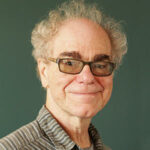 Dr. Phil Massey
Dr. Phil Massey
Phil Massey studies the biggest, hottest, and coolest stars in the Universe, and tries to understand how they form and age. He gets to use telescopes in Chile, Arizona, Hawaii, and in space. He got his undergraduate and masters degrees from Caltech in 1975, and his PhD from the University of Colorado in 1980. He was a Plackett Postdoctoral Research Fellow at the Dominion Astrophysical Institute in Victoria, BC from 1980-1984, and then joined the research staff at Kitt Peak National Observatory. He moved to Lowell Observatory in 2000, where he continues his research.
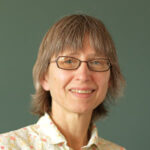 Dr. Deidre Hunter
Dr. Deidre Hunter
Deidre Hunter investigates what conditions are necessary for stars to form, using dwarf galaxies as her laboratories. She uses a multi-wavelength approach to this problem, utilizing data from the ultraviolet, the optical, infrared and radio. Her other interests include hiking and backpacking. She joined Lowell Observatory in 1986 after postdoctoral appointments at the Carnegie Institute in Washington, DC, and Kitt Peak National Observatory; her PhD in astrophysics is from the University of Illinois.
 Dr. Barbara Castanheira Endl
Dr. Barbara Castanheira Endl
Dr. Castanheira-Endl was born and raised in Brazil. She earned her B.S., M.Sc. and Ph.D. at Universidade Federal do Rio Grande do Sul, in Porto Alegre-RS, Brazil. She earned a prized fellowship as an exchange student during her Ph.D. studies at the University of Texas at Austin. From 2007-2010, she was a postdoctoral research at the University of Vienna, Austin. She returned to Texas as a postdoctoral researcher at the Department of Astronomy at the University of Texas at Austin in 2011, where she still keeps her researcher status and affiliation. In 2016, she joined Baylor University as full time lecturer. In Summer 2023, she started as a tenure-track assistant professor.
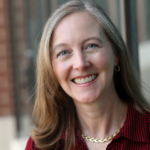 Dr. Lorin Swint Matthews
Dr. Lorin Swint Matthews
Dr. Lorin Swint Matthews is a Professor and Chair of the Department of Physics at Baylor University where she is the Associate Director of the Center for Astrophysics, Space Physics, and Engineering Research. She was employed at a multi-disciplined engineer at Raytheon Aircraft Integration Systems from 1998-2000 where she worked on NASA’s SOFIA (Stratospheric Observatory for Infrared Astronomy) aircraft. Dr. Matthews studies the charging and dynamics of dust in astrophysical and laboratory plasma environments, which has applications ranging from the formation of planets to fusion energy. She received her Ph.D. in Physics from Baylor University and is a Fellow of the American Physical Society.
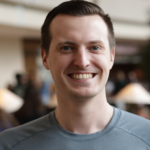
Robert Vukulich
Robert Vukelich is a Ph.D candidate in the Department of Physics at Baylor University. He received his Bachelor of Science in Civil Engineering at Minnesota State University, Mankato and his Master of Arts in Physics at Baylor University. His research focuses on ultrafast spectroscopy of quantum materials in extreme environments.
.
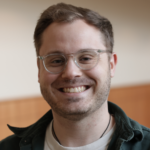 Nick Wagner
Nick Wagner
Nick Wagner is a Ph.D. Candidate at Baylor University. He graduated the Colorado School of Mines in 2019 with a degree in Geophysics and a minor in Data Science. He is a planetary geophysicist and geodynamicist using gravity to study the lithosphere and mantle of Mars, but his research interests are broad. He is interested in using gravity and topography data to infer information about the state of planetary interiors. Specifically, he has used flexure to study the stress state of Mars to investigate the spatial variability of lithospheric density and elastic thickness of the lithosphere. More recently he has computed modern elastic deformations from seasonal mass transport from the seasonal ice caps on Mars.
 Dr. Ben Rose
Dr. Ben Rose
Benjamin Rose, Ph.D., who joined Baylor University Aug. 1 as an assistant professor of physics, will serve as one of four project leaders for a research team which recently earned $11 million in NASA funding to investigate infrastructure solutions for the Nancy Grace Roman Telescope. The Nancy Grace Roman Telescope, due to launch by 2027, is NASA’s next large flagship mission. The telescope will provide significant advances in panorama and processing to examine vast expanses of the universe.
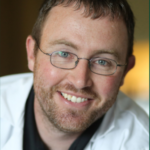 Dr. Sascha Usenko
Dr. Sascha Usenko
Dr. Sascha Usenko is a Professor of Environmental Science at Baylor University. He received his Ph.D. from Oregon State University in 2007. His research interests include atmospheric chemistry with a particular focus on the fate and transport of volatile organic compounds and aerosols.
Usenko is particularly interested in intricate complexities associated with atmospheric processing and its impacts on air quality from both anthropogenic and biogenic sources. The Usenko Group develops and utilizes mobile and portable air quality laboratories to conduct neighborhood to regional-scale air quality research. These sampling platforms are outfitted with a wide range on instrumentation including cavity-ring down and mass spectrometry.
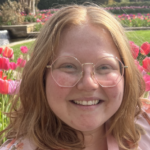 Katie Broad
Katie Broad
Katie Broad is currently a PhD candidate in planetary geophysics in the Baylor Geosciences department. She got her undergraduate degree in physics and planetary science at Purdue University. Her research is focused on meteorite impacts and the craters they leave behind. Right now, she’s using gravity measurements from the most recent American moon landing, Apollo 17, to figure out what’s beneath the surface of these craters and what they can tell us about how planets change over time. Katie’s current studies will be directly applicable to NASA’s upcoming Artemis missions that will put humans back on the surface of the Moon for the first time in over 50 years.
FACULTY:
- Alan Farhan
- Jay Dittmann
GRADUATE STUDENTS:
- Balaram Regmi
- Davis Crater
- Momin Khan
- Rudy A Morales
- Shabnam Forutan
- Parker Adamson
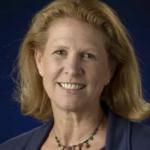 Dr. Lori S. Glaze
Dr. Lori S. Glaze
Dr. Lori Glaze is the Director of NASA’s Science Mission Directorate’s Planetary Science Division. Planetary Science is focused on space flight missions and scientific research that address fundamental questions of solar system formation and evolution, including understanding planetary environments that can (or could have in the past) support life.
Her research interests include physical processes in terrestrial and planetary volcanology, atmospheric transport and diffusion processes, and geologic mass movements. Her work focuses on data analysis and theoretical modeling of surface processes on all the terrestrial solar system bodies, particularly the Earth, Venus, Mars, the Moon, and Io.
Shoshana Z. Weider is a Program Officer in the Planetary Science Division (PSD) at NASA Headquarters. She also serves as Executive Officer to Dr. Glaze.
Within the Research and Analysis Group, Shoshana leads the Lunar Data Analysis Program and the Korea Pathfinder Lunar Orbiter Participating Scientist Program. In addition, Shoshana serves as the Executive Officer for PSD Division Director, Dr Lori Glaze, and acts the NASA Liaison for the Mercury Exploration Assessment Group (MExAG). She is also the Program Scientist for the NASA-contributed STROFIO payload on BepiColombo, the ESA/JAXA-led mission to Mercury. This mass spectrometer will be used to study Mercury’s exosphere when it enters Mercury’s orbit in 2025.
Dr . Dominic Benford
. Dominic Benford
As the Program Scientist for the Nancy Grace Roman Space Telescope, Dominic’s job is to make Petabytes of stunning images of the universe available to you, the scientifically curious, and to provide the tools for astronomers to make groundbreaking discoveries with them. Roman will address two of the biggest questions in astronomy: how did the universe grow to be like it is now, and are there planetary systems like our own around other stars? But today, his subject is “Eclipsing Faraway Suns” – because Roman, and its successor the Habitable Worlds Observatory, will carry a revolutionary instrument that blocks the light from a star and lets astronomers see the reflected light of the planets orbiting it!
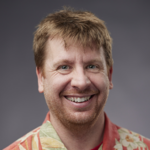 Dr. John Wisniewski
Dr. John Wisniewski
Dr John Wisniewski is a Program Scientist in the Astrophysics Division at NASA Headquarters. He serves as the Program Scientist for the SPHEREx mission and the Program Officer for the Exoplanet Research Program. Prior to coming to HQ, he contributed to more than 200+ scientific papers, primarily in the fields of planet-forming circumstellar disks and stellar astrophysics. He received his PhD in Physics from the University of Toledo (2005) and BS in Astronomy-Physics from the University of Wisconsin-Madison (1999).
His work currently focuses on assessing how rapid rotation and other environmental factors, such as metallicity, influence the evolution of massive stars and their circumstellar environments.
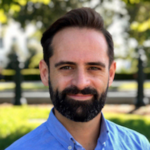 Dr. Lucas Paganini
Dr. Lucas Paganini
Dr. Lucas Paganini was appointed Deputy Program Executive for the Roman Space Telescope at NASA Headquarters in October 2022. Roman is NASA’s next-generation telescope that will explore the universe in infrared light to reveal the secrets of dark energy and dark matter and search for and image planets around other stars (aka. exoplanets). With expertise in science, engineering, and flight program management, he serves as the interface between NASA leadership and project managers to monitor project management and development of NASA’s flight missions.
With over 1000 citations, he has written more than 30 scientific articles in refereed journals about planetary science and instrumentation. Dr. Paganini received his Ph.D. in Applied Physics (2008) from the University of Freiburg, Germany, and graduated with a master’s in Electronics and Telecommunications Engineering (2003) from the University of Mendoza, Argentina.
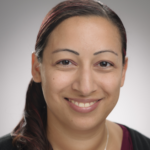 Dr. Knicole Colón
Dr. Knicole Colón
Dr. Colón is an Astrophysicist at NASA’s Goddard Space Flight Center in Greenbelt, MD. She is the James Webb Space Telescope (JWST) Deputy Project Scientist for Exoplanet Science and the Project Scientist for the Transiting Exoplanet Survey Satellite (TESS) and Pandora SmallSat missions.
Dr. Colón uses optical and infrared telescopes, including the Hubble Space Telescope, JWST, and TESS, to study “extreme” exoplanets that are unlike any planets in our solar system. Her goal is to learn about the composition of their atmospheres and gain insight into how they formed and evolved.
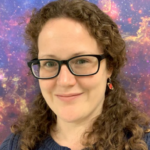 Dr. Rebekah Hounsell
Dr. Rebekah Hounsell
Dr. Hounsell is a Support Scientist in the TESS Science Support Center at NASA GSFC. TESS is an NASA explorer class mission, originally designed to detect exoplanets in our Galaxy using the transit method.
As a support Scientist Dr. Hounsell aid the community in accessing and analyzing the mission’s data. Dr. Hounsell’s areas of expertise is the study of Type Ia Supernovae, and their use as cosmological probes. It is in this area that Dr. Hounsell is working as a Co-PI in a Roman Project Infrastructure Team, preparing for NASA’s next flagship mission.
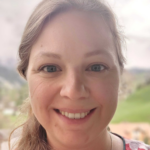 Dr. Nicole Schanche
Dr. Nicole Schanche
Dr. Nicole Schanche is a Support Scientist in the TESS Science Support Center at NASA Goddard Space Flight Center. TESS was designed to detect exoplanets around nearby, bright stars using the transit method.
As a support scientist, Dr. Schanche helps to provide tools to help the community access and use data provided by the spacecraft. In addition, Dr. Schanche works to combine TESS observations with data from ground-based telescopes in order to confirm and characterize new exoplanets.
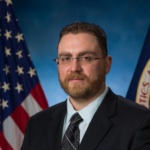 Miles Skow
Miles Skow
Mr. Miles Skow is a Program Executive for the Nancy Grace Roman Space Telescope Program at NASA Headquarters in Washington, D.C. The Roman Space Telescope is NASA’s next generation space telescope to investigate dark matter, dark energy, exoplanets, and perform other astrophysics science.
Miles has a background in Mechanical Engineering and Materials & Processes Engineering working on many human space and exploration programs like the Space Shuttle Program, the International Space Station, Orion including the European Service Module (ESM), and NASA’s Gateway Program.
Previously, Miles served in engineering and leadership roles at Kennedy Space Center, Johnson Space Center and Glenn Research Center bringing multi-center experience to the team. He has published articles in the field of optical distortion and Non-Destructive Evaluation.
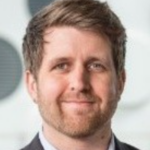 Dr. Tyler Pritchard
Dr. Tyler Pritchard
With astronomical data growing increasingly large, it has become increasingly important to develop new tools and techniques to detect and classify transients so that we may discover the rare or unusual events that allow us to gain new insights.
With these, Dr. Pritchard uses multi-wavelength observations of astronomical transients to understand their progenitors, and the often times extreme physics, that drive them.
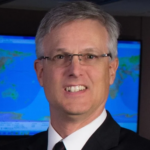 Dr. Jim Jeletic
Dr. Jim Jeletic
Jim Jeletic is the deputy project manager for the Hubble Space Telescope mission at NASA’s Goddard Space Flight Center in Greenbelt, Maryland. Jeletic’s career at NASA began in 1984 developing orbit, attitude and mission planning ground systems in the flight dynamics organization. His work included specializing in the development of computer applications for visualizing spacecraft and space environment data. He served 13 years in that organization, becoming head of the software engineering branch and a co-director of NASA’s Software Engineering Laboratory.
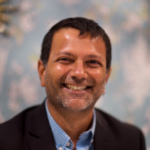 Dr. Kartik Sheth
Dr. Kartik Sheth
Dr. Kartik Sheth is a world-renowned observational astrophysicist whose scientific research has primarily been in the areas of galaxy formation and evolution, star formation and the interstellar medium. His somewhat non-traditional career path has taken him across government, academia, nonprofits, and impactful roles within the White House, serving as the Assistant Director for Research Infrastructures and Science Equity in the Office of Science and Technology Policy, and as the Program Examiner for the Department of Energy, Office of Science in the Office of Management and Budget. He recently returned to NASA where he currently serves as the Associate Chief Scientist for the Agency.
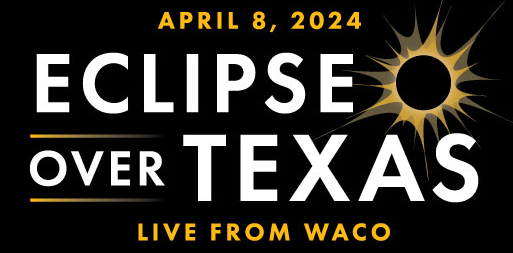


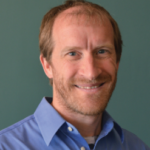

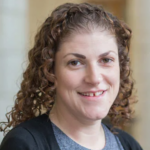 Dr. Shoshana Weider
Dr. Shoshana Weider